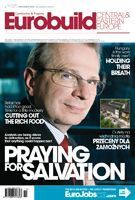In the next few years Bulgaria, Romania and Ukraine will each see the opening of 10 outlet centres, while for the region as a whole there are 140 in the pipeline. clearly a popular concept ? but there is always a ?but?
Mladen Petrov
It happens everyday. A few times a day a bus takes a big group of Japanese tourists, who have just landed in New York city. Jet-lag is not an issue. They have more important things to do. Sightseeing in the Big Apple? Not really. Shopping! The bus, however, doesn?t take them to Manhattan, but to an outlet centre outside the city, a place where you can buy USD 120 Burberry bags and other discounted luxury items. Although they can easily afford a 5th Avenue shopping spree, the Japanese, and pretty much everyone visiting the city, prefer the outlet centres.
It is not embarrassing at all. Actually, it's called smart shopping and even the image-conscious Italians, don't feel that there is anything wrong with it. In Italy, there are over






























































